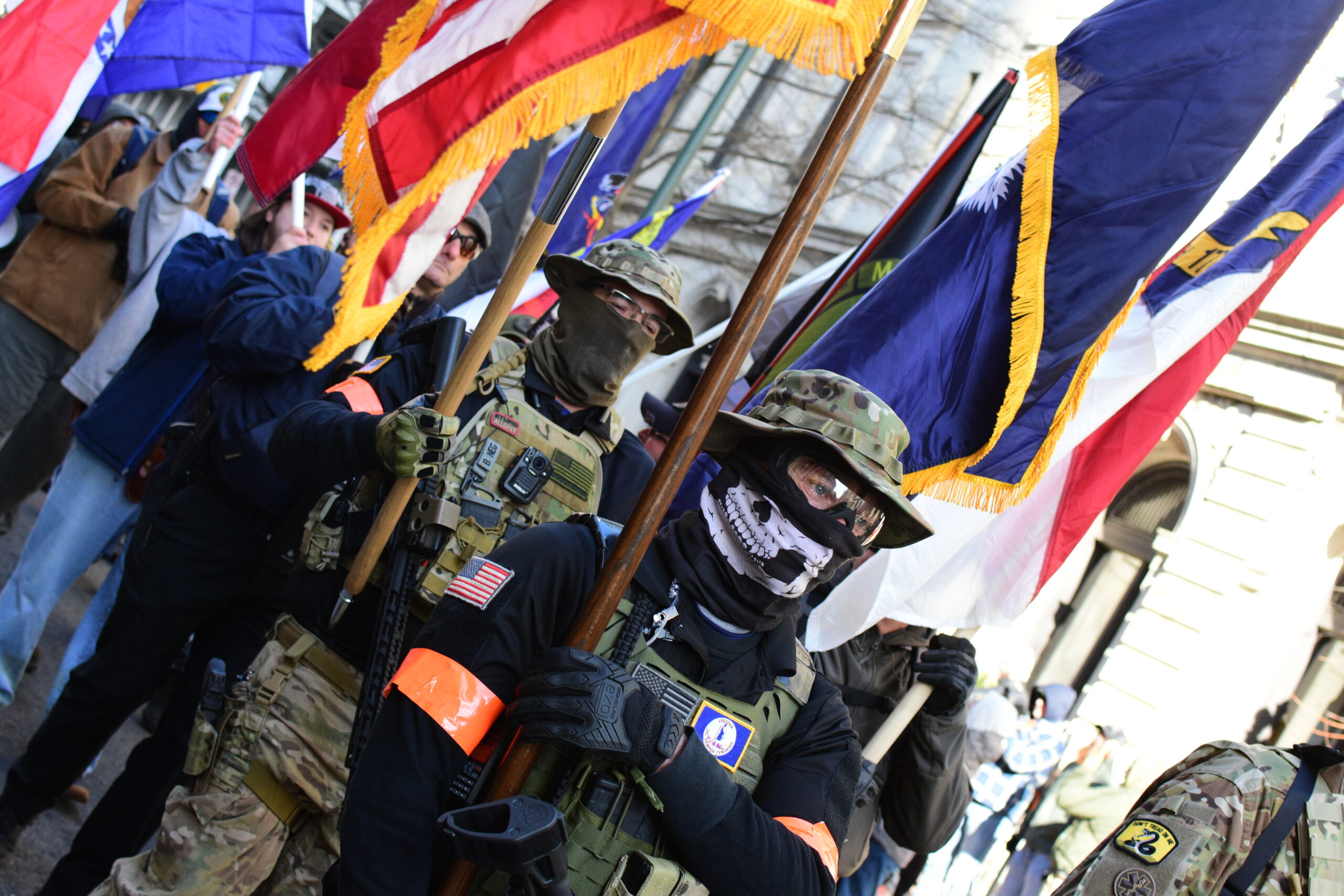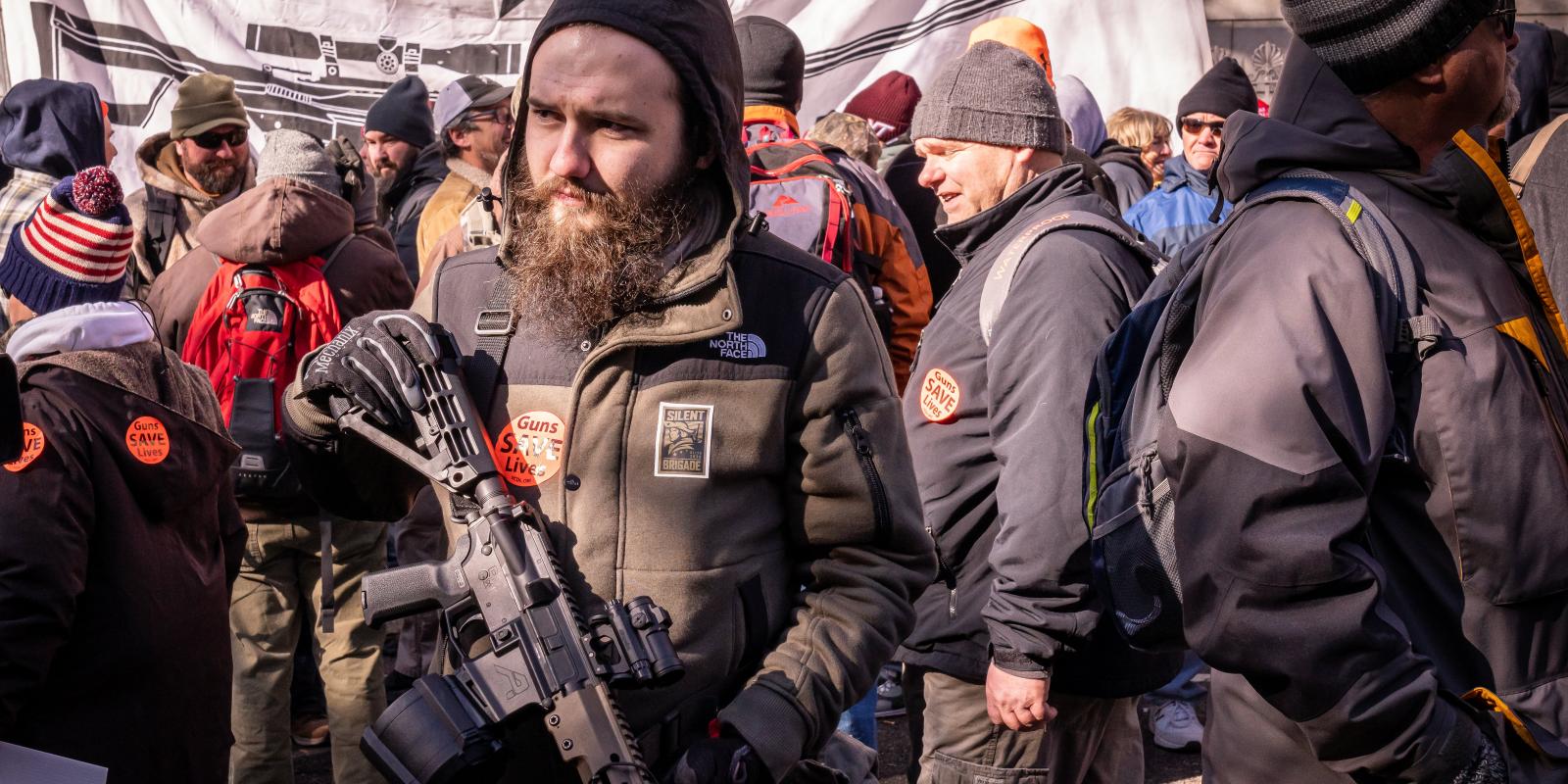First, some good news. The New York Times recently ran an important piece about the rising specter of violence within mainstream Republican Party circles. The article was noteworthy not only because it spotlighted the frightening instances of violent rhetoric and actions the conservative movement is eagerly unleashing in America, but because the Times used clear and concise language to tell the story.
Temporarily shedding the lazy Both Sides blanket that so many newsrooms use when forced to acknowledge how reckless today’s GOP has become, the Times piece didn’t waste time trying to camouflage the trend. “From congressional offices to community meeting rooms, threats of violence are becoming commonplace among a significant segment of the Republican Party,” the daily reported unequivocally. “The most animated Republican voters increasingly see themselves as participants in a struggle, if not a kind of holy war, to preserve their idea of American culture and their place in society.”
That’s the good news — some mainstream media outlets are using succinct language while addressing the most important political story in America today. Honestly, it’s one of the most crucial unfolding stories in the country’s history as the Trump-led GOP fuels an unprecedented, multi-pronged assault on U.S. democracy and gleefully flashes the threat of overt violence in the process.
That’s the bad news, and it’s spreading. “I have a hard time seeing how we have a peaceful 2024 election after everything that’s happened now,” Lee Drutman, a senior fellow at New America told the Times.
Political hostility is not new to America. The country was rocked by violence clashes, for instance, during the late 1960s and early 1970s, as the anti-war movement fractured off into more militant factions. But never did leaders of the Democratic Party or members of Congress overtly endorse political violence the way today’s Republican Party does, as it continues to actively whitewash the deadly January insurrection, which is now glorified by Fox News.
Democrats never used their considerable political muscle to try to demolish free and fair elections in America. That’s not true for today’s Republican Party, as it actively mainstreams the looming menace of hostility by fanning the flames of civil unrest, including last month celebrating an underage vigilante killer, Kyle Rittenhouse.
After he was acquitted on murder charges, at least three House Republicans said they wanted the gunman to be their intern, including Rep. Madison Cawthorn who urged his followers to “be armed and dangerous,” while posting a message celebrating Rittenhouse’s acquittal.
“Hard to describe how chilling it is to see members of the GOP and open white supremacists come together to celebrate a vigilante killing two people and getting away with it,” Cassie Miller, an extremism researcher at the Southern Poverty Law Center, tweeted.

The flashpoints of Republicans and conservatives promoting political violence have become ceaseless, to the point of frightening normalization. After Rep. Paul Gosar (R-AZ) tweeted an anime video altered to show him killing Rep. Alexandria Ocasio-Cortez (D-NY) and swinging two swords at President Joe Biden, virtually the entire Republican Party rallied to Gosar’s side when he faced a formal House rebuke for his violent, dehumanizing outburst.
Despite the GOP’s nearly universal support, Politico insisted the episode highlighted the “fringe” side of the party, while the Beltway media outlet Punch Bowl reduced the threatening, unnerving Gosar chapter to Democrats and Republicans just not trusting each other.
The pro-violence virus is spreading to the grassroots level. Polls suggest that as many as 21 million Americans think that the use of force is justified to restore Donald Trump to the presidency. In Kansas, anti-vaxxers showed up to municipal meetings wearing yellow stars, suggesting they had equal footing with Jewish victims of the Holocaust. White nationalist members of The Proud Boys are showing up at local school board meetings, to lend a menacing air to the proceedings.
At a conservative rally in western Idaho in October, a young man asked local leaders when he could start killing Democrats. “When do we get to use the guns?” he said as the audience applauded. When Rep. Debbie Dingell (D-MI) voted in favor of the recent infrastructure bill to help rebuild roads across the country she was inundated with death threats. One man told her, “I pray to God that if you’ve got any children, they die in your face.”
The welcome Times piece on GOP violence stood in contrast to a wave of vague, worthless reporting we’ve seen this year about how “Americans” are angry, without pinpointing the obvious source of the unbridled, incoherent wrath.
“Americans are angry about … everything. Is that bad?” read a recent Christian Science Monitor headline. The piece equated right-wing, anti-mask parents storming local school board meetings and issuing death threats with social justice activists taking to the streets to protest police brutality. Those two things aren’t remotely similar.
CNN’s Chris Cillizza recently bemoaned how “we’re all just so damn angry,” but could only find examples of far-right bullies lashing out in public.
Sanctioned, Republican political violence will be the most unnerving story the D.C. press faces in coming years.
